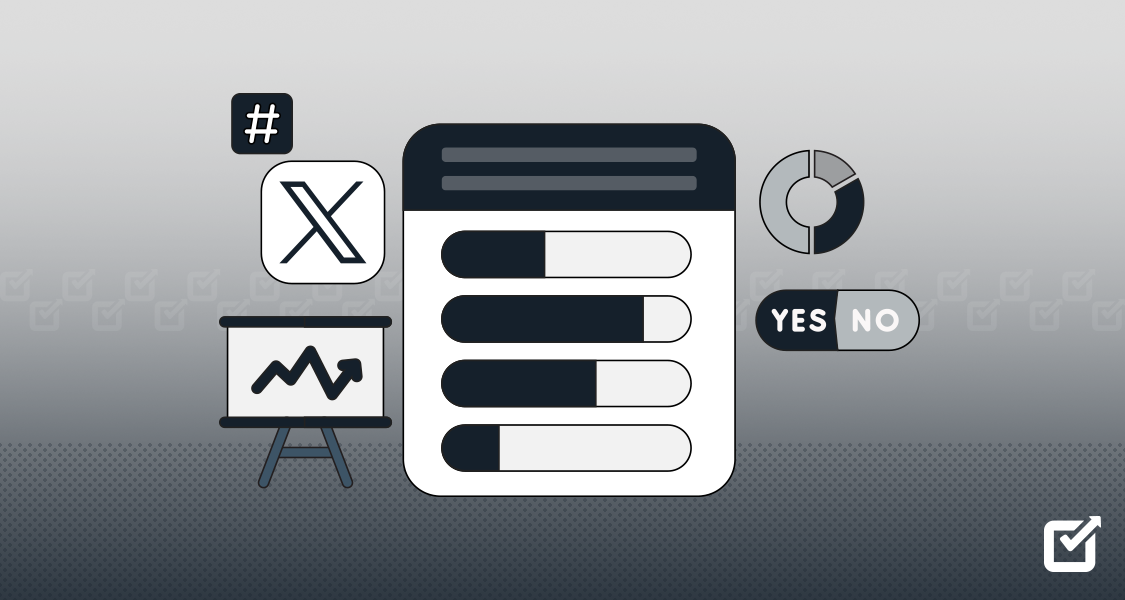Do you ever stare at your to-do list, paralyzed by the sheer volume of content you need to create?
Well, you need to embrace strategic planning and work on a content calendar!
It is the perfect way for you to visualize your strategy, plan ahead, and maintain a steady flow of high-quality content across all platforms.
If you’re managing a busy blog, an active social media presence, or a comprehensive marketing campaign, a well-crafted content calendar can be your getaway to success.
Want to know how you can get started?
This guide shares the essential elements of creating a content calendar, from choosing the right content management tools and platforms to tailoring your strategy.
Let’s begin!

Organize Your Content Like a Pro!
Keep your content strategy on track with Social Champ’s Content Calendar. Plan, schedule, and collaborate effortlessly, and never miss a deadline again!
Short Summary
- Content calendar is a strategic tool for planning, organizing, and scheduling content.
- It helps maintain consistency and regularity in content publishing.
- Some types of content calendars include editorial, marketing campaign, personal, SEO, event, and email marketing calendars.
- Popular content calendar tools include Social Champ, Trello, CoSchedule, Buffer, Sendible.
What Is a Content Calendar?
A content calendar is a strategic tool for marketers, content creators, and businesses to plan, organize, and schedule content in advance.
It serves as a visual workflow that outlines what content will be published, when it will be published, and where it will be shared.
A content calendar helps ensure a consistent and cohesive messaging strategy across all channels by mapping out content ahead of time.
A content calendar can enhance collaboration among team members besides scheduling and organization.
When everyone involved in content creation and distribution has access to a shared calendar, there’s better communication and coordination.
Team members can track deadlines, identify content gaps, and ensure that all tasks progress as planned.
Featured Article: 10 Hottest Content Marketing Trends That Will Rule the Industry in 2024
Why You Need a Content Calendar
A content calendar is a necessity for anyone serious about content marketing.
In fact, according to a survey by the Content Marketing Institute, 63% of organizations plan a content strategy, including the creation of a content calendar.
Why?
Well, a content calendar provides a structured framework that helps you plan, organize, and execute your content strategy with precision and efficiency.
Here are several compelling reasons why you need to create one:
Consistency and Regularity
One of the primary benefits of a content calendar is its ability to ensure consistency in your content output.
Consistency is key to building and maintaining an engaged audience.
A content calendar provides a clear schedule for when and where content should be published, helping you avoid the pitfalls of sporadic posting.
This regularity keeps your audience engaged and helps build trust over time.
Strategic Planning
A content calendar lets you plan your content around key dates and events relevant to your industry or business.
By mapping out your content in advance, you can align your posts with holidays, product launches, promotional campaigns, and other significant events.
This strategic planning ensures that your content is timely and relevant, maximizing its impact and resonance with your audience.
Improved Time Management
Creating content on the fly can be time-consuming and stressful.
A content calendar helps you manage your time more effectively by breaking down the content creation process into manageable tasks.
By scheduling these tasks in advance, you can allocate sufficient research, writing, editing, and design time, resulting in higher-quality content.
This proactive approach reduces last-minute rushes and allows you to focus on other important aspects of your business.
Enhanced Collaboration
For teams, a content calendar is a great collaboration tool.
It provides a centralized platform where all team members can view the content plan, track progress, and stay informed about upcoming deadlines.
This transparency enables better communication and coordination, ensuring that everyone is on the same page.
It also makes delegating tasks and managing workloads easier, leading to a more efficient and productive team
Content Diversification
A content calendar helps you maintain a balanced and diverse content mix.
By visualizing your content plan, you can ensure that you’re covering a variety of topics and formats, such as blog posts, social media updates, videos, and infographics.
This diversity keeps your audience engaged and caters to different preferences and consumption habits.
Better Resource Allocation
Planning your content in advance enables you to allocate resources more effectively.
Whether it’s budgeting for paid promotions or planning for external collaborations, a content calendar gives you a clear overview of your needs.
This foresight helps you avoid resource bottlenecks and ensures that everything is in place to execute your content strategy smoothly.
Performance Tracking and Optimization
A content calendar isn’t just for planning; it’s also a valuable tool for tracking performance.
By documenting your content and its publication dates, you can more easily monitor its impact and gather data on what works and what doesn’t.
This information is crucial for optimizing your content strategy. Based on real insights, you can identify patterns, adjust your approach, and continuously improve your content.
Audience Engagement
Regular and well-planned content helps keep your audience engaged.
When your audience knows they can expect valuable content from you regularly, they are more likely to follow, engage, and share your posts.
A content calendar helps you maintain this rhythm and ensures that you are consistently delivering value to your audience.
Featured Article: Digital Content Creation: What It Is & How to Do It Successfully in 2024
Types of Content Calendars
Content calendars come in various forms, each tailored to different needs and preferences.
Choosing the right type of content calendar depends on your business’s nature, content strategy, and team’s workflow.
Here are some of the most common types of content calendars:
Editorial Calendar
An editorial calendar is used primarily by content creators, editors, and marketing teams to plan and organize content for blogs, articles, newsletters, and other written formats.
It helps schedule content based on themes, topics, and publication dates.
This type of calendar is ideal for managing long-form content and ensuring a consistent posting schedule.
Marketing Campaign Calendar
A marketing campaign calendar plans and coordinates marketing activities for specific campaigns, such as product launches, seasonal promotions, or special events.
It helps synchronize efforts across different marketing channels and ensures that all campaign elements are executed on time.
Personal Content Calendar
For individual content creators or freelancers, a personal content calendar helps manage their content creation schedule, ensuring they meet deadlines and maintain consistency.
It’s often simpler and more flexible than team-based calendars.
SEO Content Calendar
An SEO content calendar is designed to optimize your content strategy for search engines.
It helps you plan and schedule content based on keyword research, search trends, and SEO best practices to improve your site’s visibility and ranking.
Event Content Calendar
An event content calendar plans and promotes events, such as webinars, conferences, workshops, or live streams.
It ensures that all promotional activities and related content are well-organized and timed to maximize attendance and engagement.
Email Marketing Calendar
This calendar focuses on planning and scheduling email marketing campaigns.
It might include details like email types (welcome email, promotional offer), target audience segments, and A/B testing variations.
Featured Article: The Simplest Content Curation Guide to Boost Your Marketing Strategy
How to Create a Content Calendar
Creating a content calendar involves several steps, from understanding your content goals to scheduling your posts.
Here’s a step-by-step guide to help you create an effective content calendar:
Choose the Right Tools
Select the tools that will help you create and manage your content calendar efficiently. Popular tools include Google Sheets, Excel, Trello, Asana, CoSchedule, and HubSpot.
Choose a tool that suits your team’s workflow and allows for easy collaboration and scheduling.
Identify Key Dates and Events
Identify important dates and events that are relevant to your business and audience.
This could include holidays, industry events, product launches, and seasonal trends. Planning your content around these dates ensures it’s timely and relevant.
Plan Your Content Types
Determine the types of content you’ll create and publish.
This could include blog posts, social media updates, videos, infographics, newsletters, and more.
Consider a mix of content types to keep your audience engaged and cater to different preferences.
Conduct Keyword Research
For SEO-driven content, conduct keyword research to identify the terms and phrases your audience is searching for.
Use tools like Google Keyword Planner, Ahrefs, or SEMrush to find relevant keywords and topics.
Incorporate these keywords into your content plan to improve your search engine visibility.
Create a Content Outline
Outline your content topics and themes for a specific period (e.g., monthly or quarterly).
This high-level view helps you maintain a balanced and cohesive content strategy.
Ensure that your content aligns with your goals and resonates with your audience.
Assign Responsibilities
If you’re working with a team, assign specific tasks and responsibilities to team members.
This could include writers, editors, designers, and social media managers. Clearly defining roles ensures accountability and smooth workflow.
Develop a Posting Schedule
Create a posting schedule that outlines when and where each piece of content will be published.
Based on your audience’s behavior, consider the best times and days to post. Use your chosen tool to schedule content in advance and set reminders for deadlines.
Draft and Review Content
Start creating your content based on the planned topics and schedule.
Draft, review, and edit your content to ensure it meets quality standards and aligns with your brand voice.
Collaboration tools can facilitate this process by allowing team members to provide feedback and make revisions.
Publish and Promote
Once your content is ready, publish it according to your schedule.
Use social media scheduling tools like Social Champ to automate the posting process.
You can also promote your content across all relevant channels to maximize its reach and impact.
Top 5 Content Calendar Tools for 2024
With over 5.07 billion people using social media, you need to create content rapidly. Content calendars can help with that.
Here are the top 5 content calendar tools that can simplify your workflow.
Social Champ
Social Champ is a social media management tool designed to streamline your content creation and scheduling process.
One of its standout features is the intuitive Content Calendar.
Social Champ’s Content Calendar provides a bird’s-eye view of your entire social media posting schedule. With a drag-and-drop interface, you can easily:
- Visualize your content: See upcoming posts, past posts, and even recurring content in a clear and organized manner.
- Schedule posts: Quickly add new posts or reschedule existing ones by simply dragging and dropping them to your desired date and time.
- Edit and delete: Make changes to post content, images, or scheduling directly from the calendar.
- Filter content: View posts by social network, category, or type (e.g., bulk, auto-RSS, recycle) for better organization.

Social Champ’s content calendar
The platform also offers additional features, including:
- Auto-RSS Posting: Connect your favorite blogs and websites to automatically share new content across your social channels.
- Team Collaboration: Invite team members to collaborate on content creation and scheduling, with role-based permissions for control.
- Analytics: Track the performance of your posts with detailed analytics, including impressions, engagement, and click-through rates.
- Bulk Uploading: Save time by uploading multiple posts at once using a CSV file.
- Recycling: Revive your best-performing content by scheduling it for repurposing.
- Image Editor: Basic image editing tools like Canva to enhance your visuals without leaving the platform.

Maximize Your Social Reach with Social Champ!
Simplify your social media management with Social Champ’s features, including an intuitive content calendar, automated posting, and in-depth analytics.
Trello
Trello is a project management tool that uses boards, lists, and cards to help teams organize tasks and projects visually.
It’s highly intuitive, making it easy to create and manage content calendars.
Users can assign tasks, set deadlines, and add labels for better organization.
Trello’s flexibility and integrations with other tools like Slack and Google Drive make it a popular choice for content planning.
Its visual approach helps teams stay aligned and track the progress of their content creation efforts effectively.

Trello’s website CoSchedule
CoSchedule is specifically designed for marketing teams and offers an all-in-one marketing calendar solution.
It combines content planning, social media scheduling, and project management into one platform.
CoSchedule’s Marketing Suite includes tools like Content Organizer and Social Organizer, which help streamline workflows and ensure consistency across all marketing efforts.

CoSchedule’s website Buffer
Buffer is a well-known social media management tool that excels in content scheduling and planning across multiple platforms.
Its simple and clean interface makes it easy to schedule posts, track performance, and engage with your audience.
It also offers features like a content calendar view and team collaboration options, ensuring everyone is on the same page.
Buffer is ideal for businesses that prioritize social media engagement and want to streamline their scheduling process.

Buffer’s content calendar Sendible
Sendible is a social media management tool designed for agencies and large teams.
It offers robust scheduling capabilities, allowing users to plan content across multiple social media platforms.
Sendible’s unique selling point is its extensive integration with various social networks, blogs, and even email.

Sendible’s website
Conclusion
Ready to take control of your content?
A well-structured content calendar is the first step.
With planning tools like Social Champ, you’ll save time, reduce stress, and create content that truly resonates with your audience!
Good luck!















